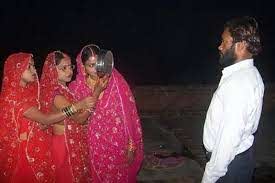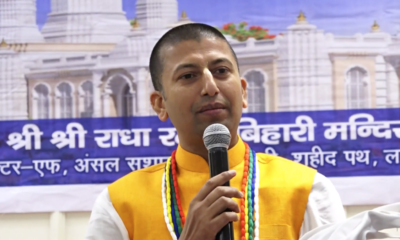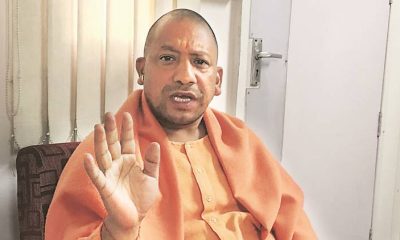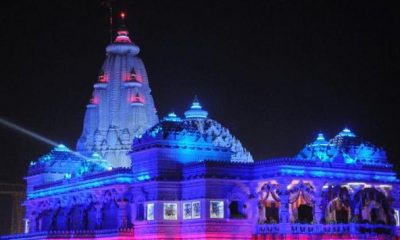Feature
Janmashtami Special : Why this festival is celebrated, know the full story from Kansa to Krishna
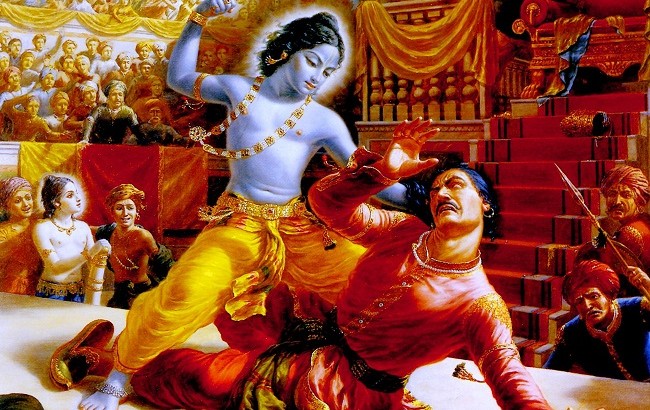
Lord Shri Krishna was born at 12 o’clock on the eighth day of Krishna Paksha of Bhadra month. Krishna is the 8th incarnation of Vishnu who was born in the Dwapara Yuga to protect people from the atrocities committed by their maternal uncle Kansa.
Since Lord Vishnu incarnated directly on this earth and it was his physical incarnation, that day is celebrated as Krishnashtami or Janmashtami.
According to the beliefs of Dwapar era, there used to be a king named Kansa in the kingdom of Mathura. Who, in the greed of power, had even locked his father in prison and started torturing him.
Gradually, his torture increased to such an extent that on the day of his own sister Devaki’s wedding, there was a voice in the air that Devaki’s mortal child would kill him.
Hearing this, the cruel ruler Kansa, who believed himself to be God, was furious and took up arms to kill his dear sister Devaki and brother-in-law Vasudev.
Stopping him, Devaki promised that Kansa could kill him as soon as his child was born.
While doing so, Kansa killed 6 children of Devaki. Then all the gods planned together and without knowing Kansa placed the seventh child of Devaki in the uterus of Rohini, the second wife of Nanda.
This seventh child was born as Balarama. According to All India Radio, at the time of the birth of the eighth child, all the guards fell asleep one by one and all the doors of the prison were also opened.
Nand raised Shri Krishna on his head and proceeded towards the house of Nand Maharaj living in Gokul. He replaced Nanda’s home-born daughter with Shri Krishna.
When Kansa reached to kill the goddess, Yoga Maya, born as a child, made her aware of the truth that her era was born. Hearing this, Kansa ordered all the children born in Mathura to be killed.
He also took help of various elusive demons but could not succeed. After growing up, Krishna killed Kansa in the Malla war and freed the Mathura people from his atrocities.
Entertainment
Meghalaya Reserves Legalized Gambling and Sports Betting for Tourists

The State Scores Extra High on Gaming-Friendly Industry Index
Meghalaya scored 92.85 out of 100 possible points in a Gaming Industry Index and proved to be India’s most gaming-friendly state following its recent profound legislation changes over the field allowing land-based and online gaming, including games of chance, under a licensing regime.
The index by the UK India Business Council (UKIBC) uses a scale of 0 to 100 to measure the level of legalisation on gambling and betting achieved by a state based on the scores over a set of seven different games – lottery, horse racing, betting on sports, poker, rummy, casino and fantasy sports
Starting from February last year, Meghalaya became the third state in India’s northeast to legalise gambling and betting after Sikkim and Nagaland. After consultations with the UKIBC, the state proceeded with the adoption of the Meghalaya Regulation of Gaming Act, 2021 and the nullification of the Meghalaya Prevention of Gambling Act, 1970. Subsequently in December, the Meghalaya Regulation of Gaming Rules, 2021 were notified and came into force.
All for the Tourists
The move to legalise and license various forms of offline and online betting and gambling in Meghalaya is aimed at boosting tourism and creating jobs, and altogether raising taxation revenues for the northeastern state. At the same time, the opportunities to bet and gamble legally will be reserved only for tourists and visitors.
“We came out with a Gaming Act and subsequently framed the Regulation of Gaming Rules, 2021. The government will accordingly issue licenses to operate games of skill and chance, both online and offline,” said James P. K. Sangma, Meghalaya State Law and Taxation Minister speaking in the capital city of Shillong. “But the legalized gambling and gaming will only be for tourists and not residents of Meghalaya,” he continued.
To be allowed to play, tourists and people visiting the state for work or business purposes will have to prove their non-resident status by presenting appropriate documents, in a process similar to a bank KYC (Know Your Customer) procedure.
Meghalaya Reaches Out to a Vast Market
With 140 millions of people in India estimated to bet regularly on sports, and a total of 370 million desi bettors around prominent sporting events, as per data from one of the latest reports by Esse N Videri, Meghalaya is set to reach out and take a piece of a vast market.
Estimates on the financial value of India’s sports betting market, combined across all types of offline channels and online sports and cricket predictions and betting platforms, speak about amounts between $130 and $150 billion (roughly between ₹9.7 and ₹11.5 lakh crore).
Andhra Pradesh, Telangana and Delhi are shown to deliver the highest number of bettors and Meghalaya can count on substantial tourists flow from their betting circles. The sports betting communities of Karnataka, Maharashtra, Uttar Pradesh and Haryana are also not to be underestimated.
Among the sports, cricket is most popular, registering 68 percent of the total bet count analyzed by Esse N Videri. Football takes second position with 11 percent of the bets, followed by betting on FIFA at 7 percent and on eCricket at 5 percent. The last position in the Top 5 of popular sports for betting in India is taken by tennis with 3 percent of the bet count.
Local Citizens will Still have Their Teer Betting
Meghalaya residents will still be permitted to participate in teer betting over arrow-shooting results. Teer is a traditional method of gambling, somewhat similar to a lottery draw, and held under the rules of the Meghalaya Regulation of the Game of Arrow Shooting and the Sale of Teer Tickets Act, 2018.
Teer includes bettors wagering on the number of arrows that reach the target which is placed about 50 meters away from a team of 20 archers positioned in a semicircle.
The archers shoot volleys of arrows at the target for ten minutes, and players place their bets choosing a number between 0 and 99 trying to guess the last two digits of the number of arrows that successfully pierce the target.
If, for example, the number of hits is 256, anyone who has bet on 56 wins an amount eight times bigger than their wager.


